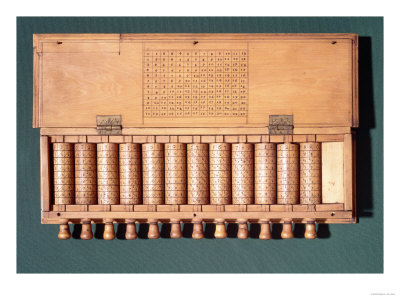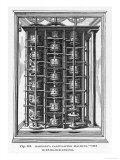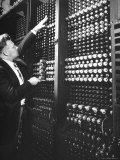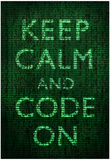|
|
|
|
|
|
|
|
|
|
|
BOOKS ABOUT COMPUTERS & COMPUTER CAREERS |
|
|
|
|
|
|
|
|
|
|
|
|
|
|
|
|
|
|
|
 |
|
|
|
Computers & Careers Vocational Educational Posters
for the social studies, science, and vocational education classroom, school guidance counselor.
|
science > vocational education > COMPUTERS | computer people < internet < social studies
|
|
Educational posters about computers and computer related careers.
• “It seems that an essential condition for crises is to be found in the existence of a highly developed system of communications and the spreading of a homogenous mentality over vast areas.” ~ Jacob Burckhardt
• “If the automobile had followed the same development as the computer, a Rolls Royce would today cost $100, get a million miles per gallon, and explode once a year killing everyone inside.” ~ Robert X. Cringely
• “Social capital may turn out to be a prerequisite for, rather than a consequence of, effective computer-mediated communication.” ~ Robert D. Putnam
• “The best computer is a man, and it’s the only one that can be mass-produced by unskilled labor.” ~ Wernher von Braun
• “The fantastic advances in the field of electronic communication constitute a greater danger to the privacy of the individual.” ~ Earl Warren
• “Our first computers were born not out of greed or ego, but in the revolutionary spirit of helping common people rise above the most powerful institutions.” ~ Steve Wozniak
|
|
|
|
| Mathematician John Napier developed an acabus, or calculating rods, for simplifying multiplication and division problems into simpler addition and subtraction calculations. They are popularly known as Napier's Bones. |
|
|
|
French mathematician Blaise Pascal constructed a mechanical calculator for addition and subtraction, called the Pascaline.
Because of its expense, the Pascaline never became more than a status symbol and toy.
|
|
|
|
The Computer
Inventions that Changed
the World -
Most people think of the computer as a fairly recent invention. But the first “computers” were actually built hundreds of years ago!
Many experts say the very first computing device ever made was the abacus, which was in use more than 2,000 years ago. In 1642, the mathematician Blaise Pascal invented a device that used gears and dials to solve complex addition problems. But the true “father” of the modern computer was a brilliant math teacher from England named Charles Babbage. Babbage, who is shown here, designed a machine in 1833 that was more than a century ahead of its time. He called his machine a “difference engine,” and it performed long mathematical calculations. Then he thought up and designed a machine that would perform even harder calculations. He called it an “analytical engine.” It stored information in a “memory” and was operated by means of cards with holes punched in them. But it was so complicated that the best engineers of the time could not build it.
The next great advance in computers was the construction of ENIAC –the Electrical Numerical Intergrator and Calculator – in 1946. ENIAC was the first general-purpose electronic digital computer. Altogether, it was 100 feet long and teen feet tall, and it weighted 30 tons. In the 1970s, the introduction of the microchip helped reduce the size of computers. Thanks to microchips, today's desktop computers can do much more than the room-sized ENIAC, and they can do thing many times faster.
Today, it is hard to imagine a world without computers. Computers are used in many simple, everyday routines, from making a telephone call, to going thorough supermarket checkout line, to putting money in a bank account. And more complicated activities, such as operating weapons systems, controlling air traffic, and monitoring surgical procedures, are also dependent on computers. Computer networking allows for nearly instantaneous worldwide communications and access to information. And computers have speeded up innovations in nearly every field.
• more “Inventions that Changed the World” posters
|
|
|
|
ENIAC is short for Electronic Numerical Integrator And Computer.
ENIAC, designed by John Mauchly and J. Presper Eckert, was a room size computer built to calculate artillery firing table.
ENIAC was completed in 1946 at the cost of nearly $500,000.00
|
|
|
|
|
| • more computers |
|
|
|
|
|
|
previous page | top
|
|
I have searched the web for visual, text, and manipulative curriculum support materials - teaching posters, art prints, maps, charts, calendars, books and educational toys featuring famous people, places and events - to help teachers optimize their valuable time and budget.
Browsing the subject areas at NetPosterWorks.com is a learning experience where educators can plan context rich environments while comparing prices, special discounts, framing options and shipping from educational resources.
Thank you for starting your search for inspirational, motivational, and educational posters and learning materials at NetPosterWorks.com. If you need help please contact us.
|
|
|















